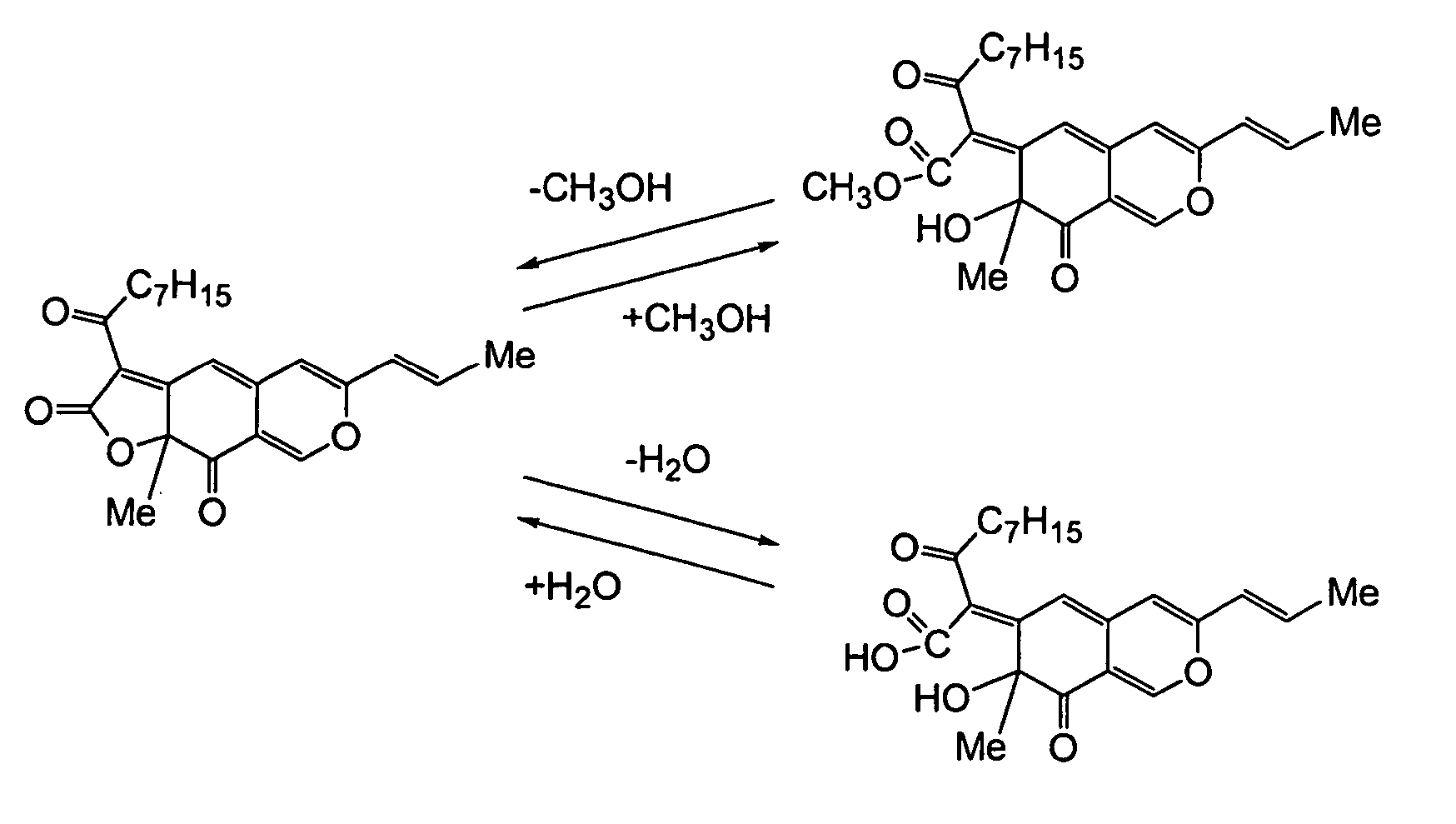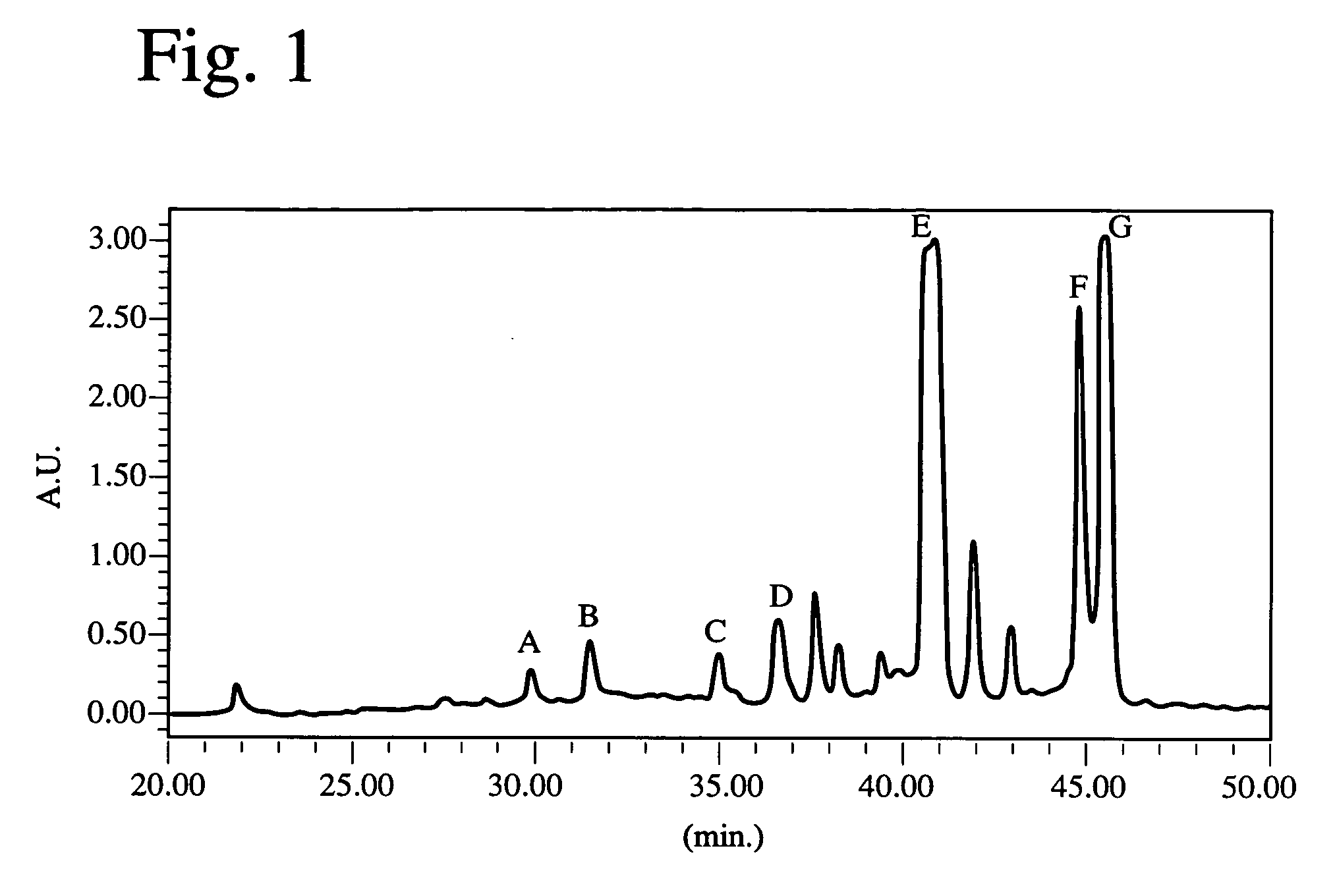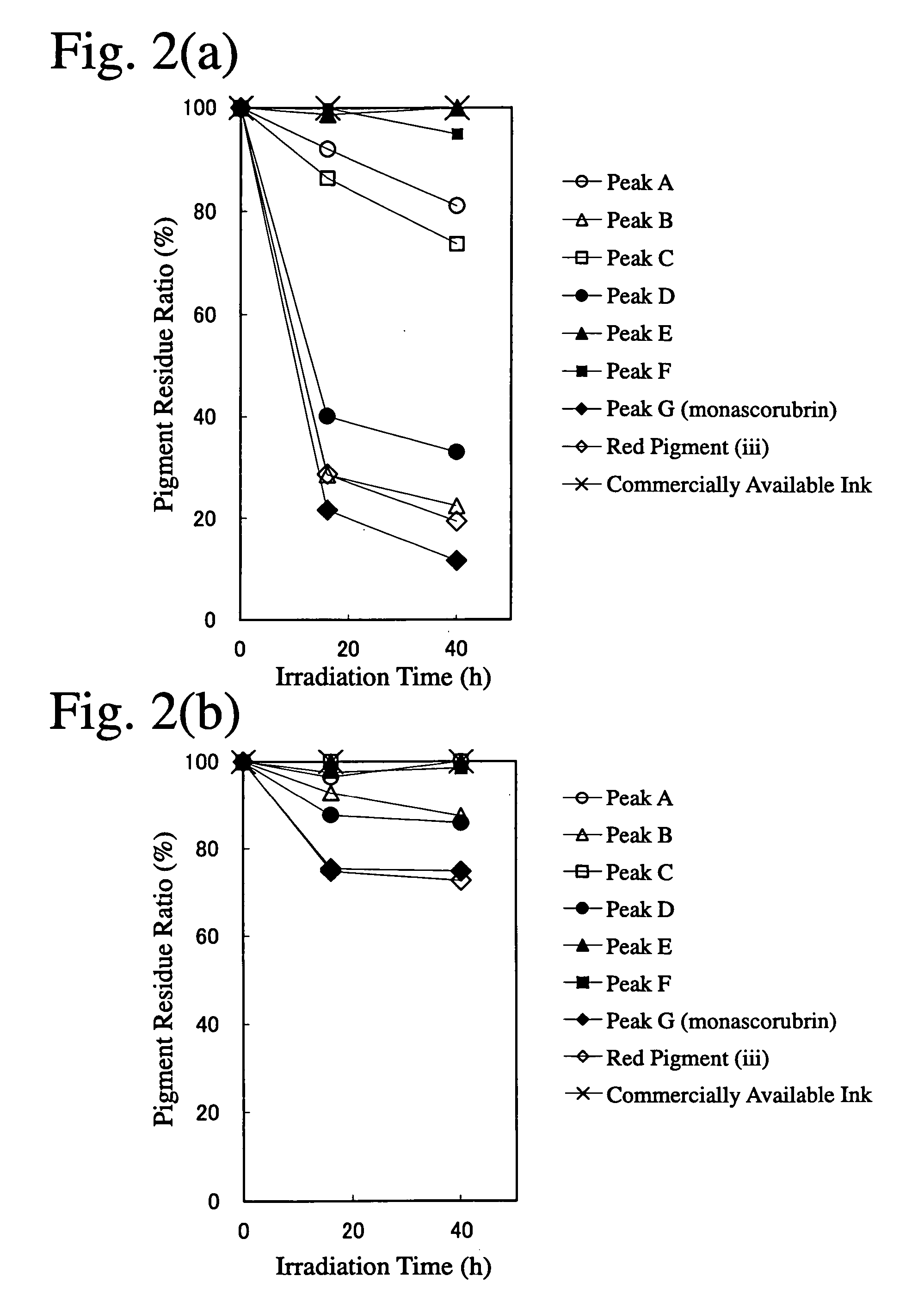Decoloring ink for ink jet printing and ink jet printing method using it
a technology of ink jet printing and ink jet printing, which is applied in the direction of inks, instruments, measurement apparatus components, etc., can solve the problems of special papers and equipments, lack of flexibility, and insufficient decolorization, and achieve excellent oil inks, excellent inks, and good coloring
- Summary
- Abstract
- Description
- Claims
- Application Information
AI Technical Summary
Benefits of technology
Problems solved by technology
Method used
Image
Examples
example 1
[0056] 100 mL of a yeast-malt (YM) culture medium comprising 10 g of glucose, 3 g of a yeast extract (available from Difco Laboratories, Inc.), 3 g of a malt extract (available from Difco Laboratories, Inc.), 5 g of bactopeptone having pH 6.5 (available from Difco Laboratories, Inc.), was charged into a 500-mL Sakaguchi flask and then subjected to a steam sterilization treatment at 120.degree. C. for 20 minutes. One loopful Monascus slant culture (Monascus purpureus of IFO 32228) was inoculated into this YM culture medium, and then subjected to shake culture at 30.degree. C. for 2 days. Its culture liquid was fragmentized by a Warring blender at 10,000 rpm for 1 minute to obtain an inoculum liquid. 5 mL of the resultant inoculum liquid was inoculated into 100 mL of the YM culture medium sterilized in the same manner as described above, and then main culture was conducted by shaking at 30.degree. C. for 2 days. After the main culture ended, the culture liquid was centrifuged to separ...
example 2
[0059] Monascus purpureus (IFO 32228) was cultured in a Sakaguchi flask in the same manner as in Example 1. After the culture ended, 50 mL of ethanol was added to the culture liquid, which was then subjected to shake culture at room temperature for 30 minutes. It was centrifuged to remove a supernatant. With 50 mL of ethanol further added to the fungal cells, it was centrifuged to remove a supernatant. Both supernatants were mixed and condensed to a dry state to obtain a red pigment (ii) comprising water-soluble pigments and oil-soluble pigments.
[0060] The resultant red pigment (ii) was dissolved in a 50-%-by-weight aqueous ethanol solution to prepare a pigment solution having the concentration of the red pigment (ii) of 4% by weight, which had absorbance of 0.2 at a wavelength of 500 nm when diluted to one-1000th. The resultant pigment solution was used to prepare ink and printed on papers in the same manner as in Example 1. The printed papers were exposed to a daylight fluorescent...
example 3
[0061] Monascus purpureus (IFO 32228) was cultured in a Sakaguchi flask in the same manner as in Example 1. After the culture ended, 50 mL of butanol was added to the culture liquid, which was then subjected to shake culture at 30.degree. C. for 2 hours. It was centrifuged to separate a water layer from a butanol layer. The butanol layer was condensed to a dry state to obtain a red pigment (iii), which was dissolved in methanol and subjected to composition analysis by high-performance liquid chromatography (HPLC). The column used was CAPCELL PAK C18 available from Shiseido Co., Ltd. having an inner diameter of 4.6 mm and a length of 250 mm, and the mobile phase was water / acetonitrile at a ratio of 85 / 25 after 0 minute, 0 / 100 after 42 minutes, and 0 / 100 after 60 minutes. The flow rate was 1 mL / minute, and the detection wavelength was 400 nm. The measurement results are shown in FIG. 1.
[0062] It is clear from FIG. 1 that the red pigment (iii) was a mixture composition. Pigments corres...
PUM
 Login to View More
Login to View More Abstract
Description
Claims
Application Information
 Login to View More
Login to View More - R&D
- Intellectual Property
- Life Sciences
- Materials
- Tech Scout
- Unparalleled Data Quality
- Higher Quality Content
- 60% Fewer Hallucinations
Browse by: Latest US Patents, China's latest patents, Technical Efficacy Thesaurus, Application Domain, Technology Topic, Popular Technical Reports.
© 2025 PatSnap. All rights reserved.Legal|Privacy policy|Modern Slavery Act Transparency Statement|Sitemap|About US| Contact US: help@patsnap.com



